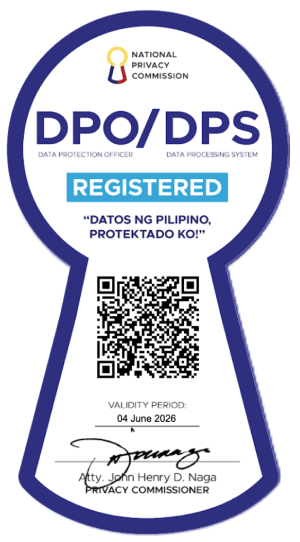
Even the most ambitious companies rarely dive headfirst into a new international market. Instead, they begin with small pilot programs—controlled, low-risk initiatives that allow them to test the waters before committing fully. This approach has become especially relevant as Colombia rises as one of the most promising nearshore outsourcing destinations. With its skilled multilingual workforce, cultural compatibility with North America, and strong government support for the BPO sector, Colombia offers fertile ground for companies eager to extend their global footprint.
But expansion is never just about location—it’s about execution. Piloting operations gives businesses the chance to evaluate performance, refine processes, and build confidence with a nearshore partner without taking on unnecessary risk. By applying outsourcing best practices, organizations can ensure these pilots not only validate their strategies but also set the foundation for sustainable, scalable growth.
This blog explores why starting small is the smartest path forward and outlines the outsourcing best practices companies should follow when launching and optimizing a pilot nearshore operation in Colombia.
Piloting Allows Companies to Test and Learn Without Overcommitting Resources
When it comes to outsourcing, one of the most overlooked but powerful strategies is piloting—starting with a small, focused initiative before scaling up. The beauty of a pilot is that it allows businesses to test theories, gather data, and make improvements without being locked into large-scale commitments that might prove costly or inefficient.
A pilot program in outsourcing acts as a real-world laboratory. Companies can observe how teams perform, measure the quality of service delivered, and identify potential risks in a controlled environment. This flexibility is especially critical for SMEs and midmarket companies, where budgets and bandwidth are tighter.
Lower Initial Investment
Pilots don’t require a massive upfront commitment. Companies can start with one or two processes, such as customer support or data entry, and evaluate results before allocating more resources.
Faster Setup and Fewer Compliance Hurdles
A smaller pilot team can often bypass the complex bureaucracy that accompanies a full-scale launch. This means businesses can get started quickly and adapt as needed.
Ability to Pivot Quickly
If the pilot reveals gaps in strategy or execution, companies can adjust without major financial losses or reputational risks.
In short, piloting is not about playing it safe—it’s about being smart. By following outsourcing best practices, businesses can treat pilots as stepping stones toward long-term, cost-efficient success.
Once the pilot is set up, selecting the right nearshore location becomes the next critical step.
Colombia Offers a Unique Blend of Advantages for Nearshore Pilots
Colombia has transformed into one of the fastest-growing outsourcing hubs in Latin America, drawing the attention of global companies seeking nearshore solutions. For organizations considering a pilot project, Colombia offers unique advantages that make it particularly appealing.
Skilled Workforce with English and Spanish Fluency
Colombia’s workforce is not only highly educated but also multilingual. Many professionals are fluent in English and Spanish, and there is growing investment in training talent in Portuguese, French, and other languages. For companies thinking of outsourcing to a Colombia call center, this multilingual advantage ensures access to a diverse and capable talent pool.
Proximity and Overlapping Work Hours with North America
Time zone alignment is one of Colombia’s greatest strengths. Unlike offshore destinations in Asia, Colombian teams can collaborate in real time with North American clients. This ensures faster communication, quicker decision-making, and improved productivity—an invaluable benefit during the pilot phase when adjustments are frequent.
Government Support and Infrastructure for BPO Growth
Colombia’s government actively promotes the outsourcing industry through tax incentives, training initiatives, and investments in technology infrastructure. This ecosystem makes it easier for international companies to establish pilot operations and scale with confidence.
In short, Colombia offers the right blend of talent, accessibility, and support systems to make pilot programs successful.
With the location chosen, the focus turns to defining the pilot’s scope.

A Clear, Manageable Scope Ensures a Focused and Measurable Pilot
Defining the scope of a pilot is one of the most critical nearshore outsourcing best practices. Without boundaries, pilots risk becoming unfocused and unmanageable, making it difficult to draw clear conclusions.
Select one or two high-impact functions to outsource first.
Companies should resist the temptation to outsource everything at once. Instead, they should choose processes that are impactful yet manageable—such as inbound customer service calls or technical support—in order to test Colombia’s workforce capabilities effectively.
Establishing measurable performance metrics from the start.
KPIs should be set early to evaluate the pilot’s success. For example, a company testing a Colombia call center might measure first-call resolution rates, average handle time, and customer satisfaction scores.
Avoid scope creep during the pilot phase.
Expanding the scope too early creates confusion, dilutes focus, and increases risk. Keeping the pilot contained allows businesses to refine processes and ensure a solid foundation before scaling.
By clearly defining what success looks like, companies can ensure their pilot program produces actionable insights.
After defining scope, building the right pilot team is essential.
The Pilot’s Success Hinges on the Right Talent and Leadership Mix
Talent is the engine of every outsourcing project. Even the best-designed pilot will struggle if the wrong people are at the helm. One of the best practices for outsourcing nearshore operations in Colombia is to balance local expertise with guidance from the client’s headquarters.
Prioritize cultural fit and bilingual skills.
Outsourcing is not just about skills—it’s about compatibility. Choosing team members who understand U.S. culture while being fluent in both English and Spanish ensures smoother communication.
Blend experienced nearshore talent with U.S. or HQ representatives.
Including someone from the home office provides continuity and reinforces brand values. At the same time, local Colombian talent brings cultural insights and efficiency in execution.
Train leaders to bridge communication styles and expectations.
A pilot project often reveals subtle differences in communication styles. Effective leadership ensures these gaps don’t become barriers.
When companies choose talent thoughtfully, they create a team that doesn’t just execute tasks but builds long-term trust.
Once your team is ready, the pilot needs a structured onboarding process.
Structured Onboarding and Process Documentation Build a Strong Operational Foundation
A well-planned onboarding process is a cornerstone of outsourcing best practices. This is especially true during the pilot phase, where first impressions and habits often set the tone for long-term operations.
Documenting Workflows and SOPs
Clear documentation ensures consistency, reduces miscommunication, and helps new hires get up to speed quickly.
Cross-Training Team Members for Flexibility
In a small pilot team, cross-training ensures coverage when someone is absent and builds resilience into the process.
Aligning Tools and Technology Early
Ensuring teams in Colombia use the same systems and tools as headquarters minimizes disruptions. Whether it’s CRM software, collaboration platforms, or security protocols, early alignment prevents headaches later.
Onboarding and documentation may seem tedious, but they are critical in creating scalable systems.
Onboarding sets the stage for continuous monitoring and improvement.
Continuous Monitoring Ensures Real-Time Adjustments and Improvement
Launching a pilot is just the beginning. The real value comes from continuous monitoring, which allows businesses to refine operations based on real-world results. This principle is at the heart of nearshore outsourcing best practices.
Weekly Performance Reviews
Frequent reviews allow companies to address challenges quickly, ensuring small problems don’t snowball into bigger ones.
Feedback Loops with Onshore Teams
Encouraging feedback between headquarters and nearshore teams helps align expectations and keep everyone on the same page.
Agile Problem-Solving To Address Issues Quickly
Pilots require agility. When a process isn’t working, companies must pivot fast—adjusting workflows, retraining staff, or reassigning resources.
This constant cycle of monitoring and improvement is what transforms a pilot into a scalable success story.
The insights gained during monitoring guide your scale-up strategy.
Use Pilot Insights to Plan a Scalable, Long-Term Nearshore Strategy
A successful pilot is not an endpoint—it’s a roadmap for the future. By analyzing results, companies can determine whether they are ready to scale and how to do it effectively.
Identify successful workflows for replication.
Processes that perform well during the pilot should form the foundation of the larger outsourcing strategy.
Scale in phases to maintain quality.
Instead of doubling or tripling teams overnight, businesses should expand gradually, ensuring quality remains consistent.
Leverage lessons learned for future hires and processes.
Every pilot offers valuable lessons. Whether it’s fine-tuning recruitment, improving training, or adjusting KPIs, these insights provide a competitive advantage as operations expand.
This strategic approach turns a pilot into a launchpad for long-term outsourcing success in Colombia.
Wrapping up, let’s again emphasize why starting small is the smartest path forward.
Follow Outsourcing Best Practices to Support Your Nearshore Success
Starting small with a pilot in Colombia offers a low-risk, high-reward pathway to nearshore success. Pilots allow companies to test without overcommitting, tap into Colombia’s multilingual and skilled workforce, set measurable scopes, build effective teams, and continuously refine operations. By following best practices for outsourcing nearshore operations in Colombia, businesses can scale confidently, knowing their strategies have been tested and proven.
Colombia’s advantages—time zone alignment, cultural compatibility, and government support—make it an ideal hub for nearshore pilots. Combined with structured onboarding, agile monitoring, and phased scaling, these elements ensure that outsourcing isn’t just cost-effective but transformative.
Are you ready to explore how Colombia can play a role in your outsourcing strategy? Connect with SuperStaff today to design a pilot program tailored to your business goals and set the stage for long-term success.






